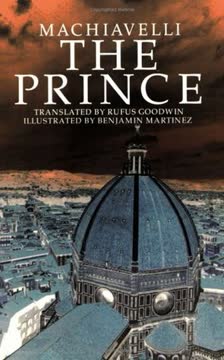Key Takeaways
1. Attention is a scarce resource in our information-rich world
"We have the same 1,440 minutes per day our ancestors had but far more information and distractions to fill that time."
Information overload: In today's digital age, we are bombarded with an unprecedented amount of information. The average person in 2006 was exposed to 174 newspapers' worth of information daily, compared to just 40 newspapers' worth in 1986. This exponential increase in available information has led to:
- Shorter attention spans
- Increased multitasking
- Difficulty focusing on single tasks
Attention as currency: In this landscape, attention has become a valuable commodity. Companies, individuals, and ideas must compete fiercely to capture and retain people's limited attention. This scarcity of attention has profound implications for:
- Marketing and advertising strategies
- Content creation and distribution
- Personal and professional communication
Attention management: To thrive in this environment, it's crucial to develop skills for managing both our own attention and that of others. This involves:
- Prioritizing information consumption
- Developing strategies to minimize distractions
- Learning techniques to effectively capture and retain others' attention
2. Three stages of attention: immediate, short, and long
"Like concrete, our opinions on political issues or our beliefs about the world solidify over time and become harder and harder to break."
Immediate attention is our instinctive reaction to stimuli, lasting only a few seconds:
- Triggered by sudden noises, movements, or visual contrasts
- Helps us quickly assess potential threats or opportunities
- Governed by our subconscious and evolutionary instincts
Short attention is our focused concentration on a specific event or stimulus, lasting minutes to hours:
- Allows us to engage with content, solve problems, or complete tasks
- Requires conscious effort and can be easily disrupted
- Influenced by factors like novelty, relevance, and personal interest
Long attention represents our sustained interest in ideas, products, or people over extended periods:
- Develops through repeated exposure and meaningful engagement
- Forms the basis of our opinions, beliefs, and long-term relationships
- Hardest to capture but most valuable for lasting influence
Understanding these stages helps in crafting strategies to effectively capture and maintain attention at each level, whether for personal, professional, or commercial purposes.
3. The Automaticity Trigger: Leveraging sensory cues to capture attention
"The Automaticity Trigger is our unconscious tendency to shift our attention toward the sights, sounds, and other sensory cues important to our safety and survival."
Visual cues: Colors and contrasts play a crucial role in capturing immediate attention:
- Red and yellow are particularly effective in grabbing attention
- High contrast between elements increases visibility and focus
Auditory cues: Certain sounds automatically trigger our attention:
- Our name being called
- Unexpected or novel sounds in our environment
- Sounds associated with danger or opportunity
Other sensory cues:
- Touch: Texture and temperature can influence perception and attention
- Smell: Certain scents can evoke strong memories or emotions
To effectively use the Automaticity Trigger:
- Understand your audience's instinctive reactions
- Design visual and auditory elements that stand out from the environment
- Consider multisensory approaches for maximum impact
- Be mindful of cultural differences in sensory associations
Remember that while automaticity can capture immediate attention, it must be combined with other triggers to maintain engagement over time.
4. The Framing Trigger: Adapting to or changing frames of reference
"Frames of reference aren't set in stone, though. Like Edna Murphey and James Young, you can change and influence the frames of reference of others."
Understanding frames: Frames of reference are mental structures that shape how we perceive and interpret information:
- Influenced by past experiences, culture, and personal beliefs
- Act as filters for processing new information
- Can lead to biases and resistance to change
Adapting to frames: To effectively communicate, first understand your audience's existing frames:
- Research their background and perspectives
- Use language and examples that resonate with their worldview
- Address potential objections or misconceptions proactively
Changing frames: To shift someone's perspective:
- Acknowledge their current frame
- Introduce new information gradually
- Use storytelling and metaphors to make new ideas relatable
- Provide evidence and social proof to support the new frame
Overcoming the inertia of ideas: Changing established frames is challenging but possible:
- Be patient and persistent in your efforts
- Use multiple approaches and touchpoints
- Leverage trusted sources and influencers
- Demonstrate clear benefits of adopting the new frame
By mastering the Framing Trigger, you can more effectively persuade, teach, and connect with your audience, leading to deeper and more lasting attention.
5. The Disruption Trigger: Violating expectations to redirect attention
"The Disruption Trigger is an event—a person's behavior or a change in our environment that disrupts or violates our expectations of how the world should work."
Elements of effective disruption:
- Surprise: Unexpected events or information that grab attention
- Simplicity: Clear and easily understood disruptions
- Significance: Relevance to the audience's interests or needs
Types of disruption:
- Visual: Unusual imagery or design that stands out
- Conceptual: Ideas that challenge conventional wisdom
- Behavioral: Actions that defy social norms or expectations
Benefits of disruption:
- Captures immediate attention in crowded environments
- Makes ideas or products more memorable
- Can lead to viral sharing and word-of-mouth marketing
Cautions when using disruption:
- Ensure the disruption aligns with your overall message or brand
- Be mindful of potential negative reactions or offence
- Use sparingly to maintain impact and avoid desensitization
To effectively use the Disruption Trigger:
- Analyze your audience's expectations and routines
- Identify opportunities for meaningful, relevant disruption
- Test different approaches to find the right balance of surprise and significance
- Follow up disruption with valuable content or experiences to maintain engagement
6. The Reward Trigger: Motivating attention through intrinsic and extrinsic rewards
"While attention is often triggered by an event, a smell, or some other stimulus, most of our attention is goal driven: we make a conscious decision to focus on an assignment because our goal is to complete it and receive a good grade, and we check our text messages because our goal is to find out what our friends are saying."
Types of rewards:
- Extrinsic rewards: Tangible benefits like money, prizes, or recognition
- Intrinsic rewards: Internal satisfaction, personal growth, or enjoyment
Effectiveness of rewards:
- Extrinsic rewards:
- Good for short-term motivation and immediate attention
- Can lose effectiveness over time or lead to decreased intrinsic motivation
- Intrinsic rewards:
- More effective for long-term engagement and sustained attention
- Foster deeper commitment and personal investment
Implementing reward systems:
- Identify your audience's motivations and values
- Design rewards that align with those motivations
- Balance extrinsic and intrinsic rewards for optimal engagement
- Use unexpected rewards to maintain interest and excitement
Considerations:
- Be cautious of over-reliance on extrinsic rewards
- Ensure rewards are meaningful and proportionate to the effort required
- Gradually shift focus from extrinsic to intrinsic rewards for lasting engagement
By skillfully using the Reward Trigger, you can create powerful motivations for sustained attention and engagement in various contexts, from education and workplace productivity to product design and customer loyalty programs.
7. The Reputation Trigger: Using credibility to command attention
"When simply hearing your name makes people pay attention, you have become a master of attention."
Building reputation: Establishing credibility takes time and consistent effort:
- Demonstrate expertise through high-quality work or content
- Engage with your audience regularly and authentically
- Collaborate with other respected figures in your field
- Be consistent in your messaging and actions
Leveraging existing reputations:
- Partner with credible individuals or organizations
- Cite reputable sources to support your claims
- Use testimonials or endorsements from respected figures
- Highlight relevant credentials or achievements
Types of reputation influencers:
- Experts: Recognized authorities in specific fields
- Authority figures: Those with official power or status
- The crowd: Collective opinions and social proof
The credibility rule: When seeking attention, lead with at least one validator – a reputable person or entity that your audience recognizes and trusts.
Cautions:
- Avoid false claims or exaggerations that can damage credibility
- Be transparent about potential conflicts of interest
- Acknowledge mistakes quickly and take responsibility
By effectively using the Reputation Trigger, you can:
- Increase the perceived value of your ideas or offerings
- Overcome initial skepticism or resistance
- Build long-term trust and loyalty with your audience
- Amplify the impact of your other attention-capturing efforts
8. The Mystery Trigger: Creating suspense and curiosity to maintain interest
"Our compulsion for completion drives us to finish the storyline—not doing so makes us feel uncomfortable and unsettled."
Elements of effective mystery:
- Suspense: Building anticipation and tension
- Emotional buy-in: Making the audience care about the outcome
- Plot twists: Unexpected developments that maintain interest
- Cliff-hangers: Unresolved questions that encourage continued engagement
The psychology of mystery:
- Activates our innate desire for closure and understanding
- Triggers dopamine release, creating a pleasurable anticipation
- Engages problem-solving instincts and cognitive processing
Applying mystery in various contexts:
- Marketing: Teaser campaigns and gradual product reveals
- Education: Posing intriguing questions before delivering content
- Storytelling: Withholding key information to maintain suspense
- Product design: Creating discoverable features or "Easter eggs"
Best practices:
- Balance revealing information with maintaining curiosity
- Ensure the payoff is worth the buildup
- Use mystery sparingly to avoid frustration or disengagement
- Provide satisfying resolutions to maintain trust and credibility
By mastering the Mystery Trigger, you can:
- Increase engagement and time spent with your content or product
- Encourage deeper exploration and interaction
- Create memorable experiences that people want to share
- Build anticipation for future offerings or developments
9. The Acknowledgment Trigger: Fostering connection through recognition and empathy
"The deepest human need—not sex, not food, not sleep—is to be understood. [It's] the greatest feeling in the world. That's a deeper form of acknowledgment."
Components of acknowledgment:
- Recognition: Awareness of someone's existence and contributions
- Validation: Affirming the value and uniqueness of individuals
- Empathy: Understanding and sharing the feelings of others
Benefits of acknowledgment:
- Builds trust and loyalty
- Increases engagement and participation
- Fosters a sense of belonging and community
- Motivates continued attention and interaction
Strategies for effective acknowledgment:
- Active listening: Pay full attention and respond thoughtfully
- Personalization: Tailor interactions to individual preferences and needs
- Public recognition: Celebrate achievements and contributions
- Empathetic communication: Show understanding of others' perspectives and emotions
Scaling acknowledgment:
- Use technology to facilitate personalized interactions at scale
- Create opportunities for community engagement and peer recognition
- Develop systems for consistent and meaningful feedback
- Train team members in empathetic communication and acknowledgment techniques
By mastering the Acknowledgment Trigger, you can:
- Create deep, lasting connections with your audience
- Build a loyal community around your brand or ideas
- Increase retention and reduce churn in various contexts
- Differentiate yourself in a world of fleeting attention and impersonal interactions
Remember that genuine acknowledgment requires authenticity and consistency. It's not just a technique, but a fundamental approach to human interaction that can transform relationships and create lasting impact.
Last updated:
Review Summary
Captivology receives mostly positive reviews, with readers praising its insights on attention-grabbing techniques. Many find the book's seven "attention triggers" informative and applicable to various fields. Reviewers appreciate the blend of scientific research, practical examples, and easy-to-understand explanations. Some readers note the book's relevance in today's information-saturated world. While a few critics find it dry or overly technical, most consider it a valuable resource for marketers, educators, and anyone seeking to capture and maintain attention effectively.
Similar Books










Download PDF
Download EPUB
.epub digital book format is ideal for reading ebooks on phones, tablets, and e-readers.




